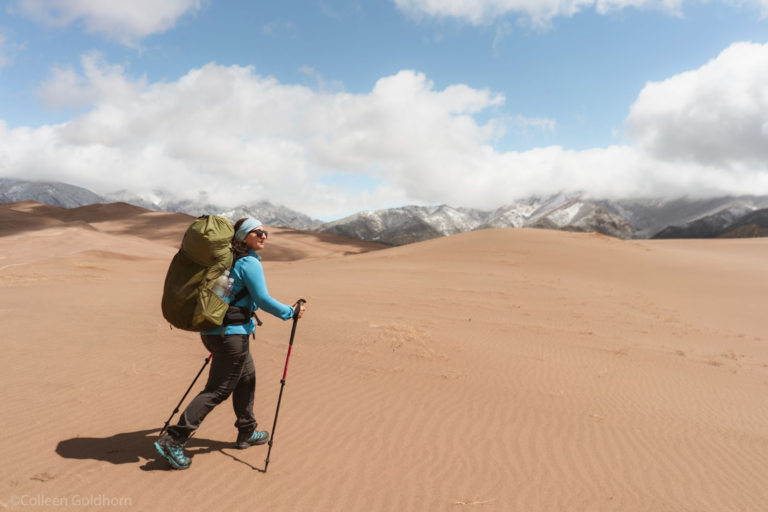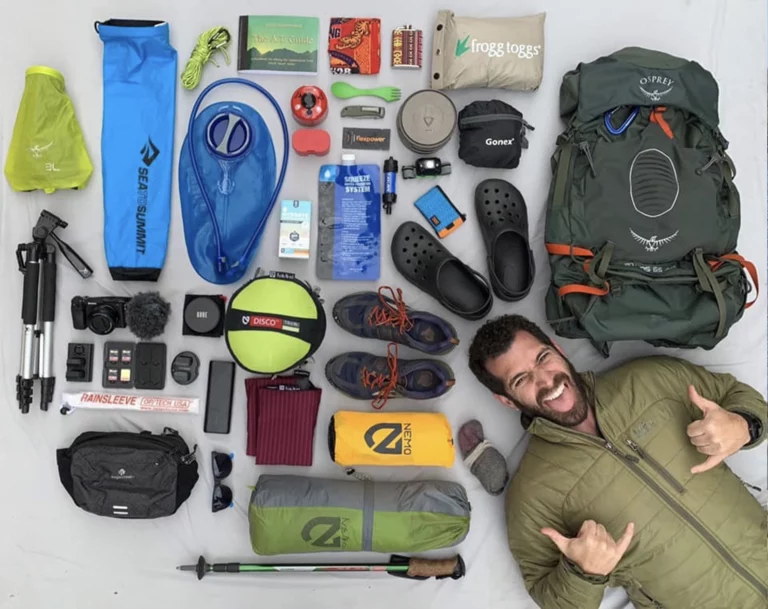There is no bad weather, just bad planning. Let us teach you how to layer up for the spring season.
When the short cold days of winter are finally starting to stretch out longer and longer and all the trees begin to bud out, we know spring is on its way. While most of us delight at this changing of seasons and immediately want to head for the hills, knowing how to prepare for springtime adventures can be quite challenging. Having a solid layering system is crucial for staying warm, dry, and safe.
While the sun is certainly staying out longer and the middle of most days might be t-shirt
weather, spring in the mountains can bring highly variable weather patterns. Night time lows are often still dropping below freezing and depending where you are, rain and snow are still highly likely. We’ve all misjudged how long a hike is going to take or neglected to check the most recent weather forecast, but how you dressed and what extra layers you have with you will determine if that means you are just going to be a little late for dinner, or if your evening is going to turn into a cold and shiver filled nightmare.
To dress for success, let’s start with the basics. While cotton can be a great choice for staying cool on hot summer days, it’s usually not your best choice if you encounter cool to cold temperatures. The big problem with cotton is that once it gets wet, either from your own sweat or some kind of precipitation, it stays wet for a long time and loses most of its insulating ability. We suggest using base layers made from either synthetic materials, like this Black Diamond Synthetic Long Sleeve or merino wool like this REI Merino T-Shirt. Synthetics dry quickly and are very breathable but are prone to getting a certain kind of funk to them. Merino, while often more expensive than synthetic options, maintains almost all of its insulating abilities when wet and still dries faster than cotton. One of merino wool’s best qualities is that when compared to every other material we’ve tested, it is quite odor resistant, which makes it a great choice for multi-day camping or backpacking trips.
Merino is an ideal choice when you’re picking out socks. It’s almost impossible to keep socks dry, whether it’s from a stream crossing or sweat from hiking through the heat of the day, your feet will get wet, and once they do, unless you take the time to take off your shoes and air dry them, your socks are going to stay wet. But lucky for you, wool socks like these Darn Tough Socks will keep your feet warm even when wet.
Blurring the line between base layer and mid layer is one our favorite pieces of clothing, the unassuming hooded sunshirt. Sunshirt’s like this SmartWool Merino Hoodie give you a lot of options throughout the day. In the early mornings, when worn under another layer, they can add just a touch of extra insulation and the hood will keep the wind off your ears and neck. Come mid day, when worn alone, the thin breathable material will help wick sweat away and keep the harsh sun from beating down on your head. You can’t go wrong with a sun shirt any time of the year, but they are especially clutch in the spring.
While there are a lot of options on the midlayer market these days, you can’t go wrong with the classic fleece jacket. Fleece is a synthetic material made of polyester that is breathable and good at wicking moisture off your body as you sweat. Since it will be part of a layering system, you will probably want to opt for something light weight like this Patagonia Fleece Hoodie.
When choosing pants, we almost always opt for a synthetic option like these Prana Synthetic Pants. They are lightweight, breathable, and dry as fast as anything. You ideally want pants with enough room to be able to layer long underwear underneath, but not so baggy it will be cumbersome to throw rain pants like the Black Diamond Rain Pants over top.
When choosing rainware for the spring, we tend to opt for lightweight options that are easy to throw in the bottom of your pack and forget about. Big heavy ski jackets, although waterproof, are not what you want for spring forays into the mountains. Options like this Black Diamond Rain Shell, offer the ideal balance between weight and functionality.
The final piece of the puzzle is adding a warm but lightweight insulating layer to your kit. It doesn’t need to be the biggest and puffiest jacket you can find because you will use it in conjunction with the rest of your layers. Throwing a rain shell over a puffy like this Mountain Hardwear Puff will provide you with a surprising amount of warmth.
From snow flurries to scorching heat, with the right layering system, you’ll be prepared for whatever mother nature throws at you. With lightweight options for all conditions, you can dress up or down all day long, depending on what conditions you encounter.






